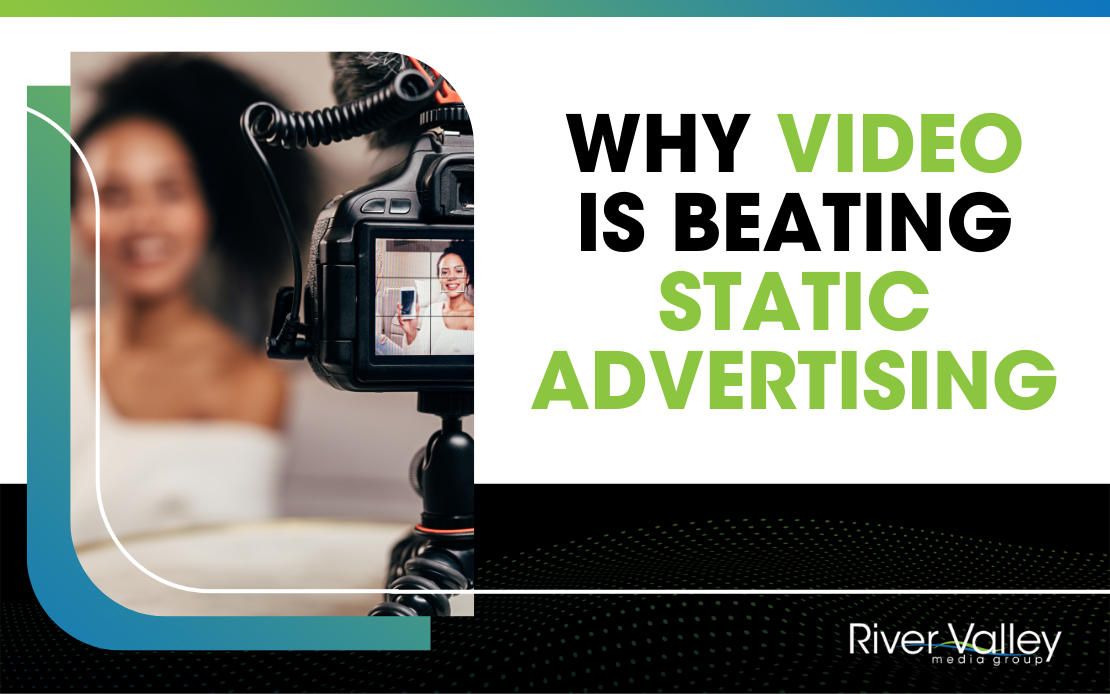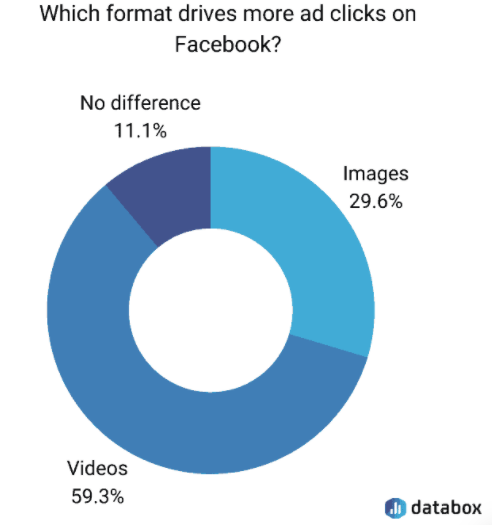
With all of the different media options out there, allocating dollars for advertising can make many business owners’ head spin. For those that are looking for a way to engage and educate their target audience, video may be the answer you’ve been waiting for. So, whether you have already implemented video in your strategy or are just getting started, this article was made to give you a new perspective on a game changing medium.
Versatility
Video is able to be used across virtually any type of media. In addition, the medium allows unlimited possibilities for content including animation, special effects, sound and other cool tricks to make the message stand out. (1) Video content is commonly used in ads served through Instagram, Facebook, LinkedIn, YouTube and countless other formats. Also, since most companies either hire an outside agency to produce the content or shoot the video themselves, they own the creative which means they can repurpose it for future projects. By understanding a target customers video consumption habits, an advertiser can tailor their messaging and pick the best channels to promote on. When you consider the alternative method of static display, there is a limited number of places where the ad can be seen and there is no guarantee it will reach the target customers. In fact, many internet savvy customers have found ad blocking software which excludes them from the impressions they would normally be served.

Efficiency
On Facebook, organically posted content only reaches 16% of a page’s followers. (3) In other words, business owners are incentivized to advertise on their pages so that they can reach a large number of potential customers. In order to maximize the return on investment for your creative, it is essential that the release of your content enables customers to easily carry out the desired action. So what about creative? Is it better to use static images and text on Facebook or is video more effective? Studies show that video content drove substantially higher engagement than static images. Intuitively, when a potential customer is presented with a video they are given more time to consider the message compared to a simple image.
When measuring the overall success of a campaign, clicks and traffic are nice but without calls, sales, or other meaningful interactions with customers you might feel like you are wasting your money. So the follow up question would be, do video ads also improve conversion rates? One agency reported that the use of video in their clients creative prompted an increase in conversions by 20-30% over images in sponsored ads. Another interesting factor is that 90-95% of user traffic to Facebook comes from mobile and other vertical video sources which facilitates higher visibility and better click-thru rates. (3)
Memorability
Video content grabs the audience’s attention. On average, 37% of viewers watch a video to completion, and if the video is under 90 seconds the completion rate is closer to 53%. (1) Additionally, studies show that more than 50% of all consumers would choose to watch branded video content rather than read through newsletters, blogs and other static media formats. (1) What makes video creative so successful? One of the most compelling reasons is that video allows an advertiser to convey a clearer message than you could achieve in a singular static ad. Likewise, videos enable advertisers to release dynamic, trendy, and informative content to customers that keep them engaged without requiring them to read through the information themselves. (2) With static ads, using a lot of text can cause a negative reaction for a potential customer. Facebook even institutes a limit of text a static social post can contain to promote best practice on their platform.
Conclusion
Even though 55% of people use the internet to watch videos, many businesses have been slow to take advantage of the medium in their marketing. (2) Instead, some traditional brands stick to the tried and true method of static display. Some reasons that these firms use to justify their skepticism of video include the cost of producing assets and the time consuming nature of the editing that follows. Although the process of creating video assets is more intensive than static display it doesn’t always have to break the bank. So, even though it may be easier to create static ads, research shows that the extra work clearly pays off for the advertisers willing to invest the time.
